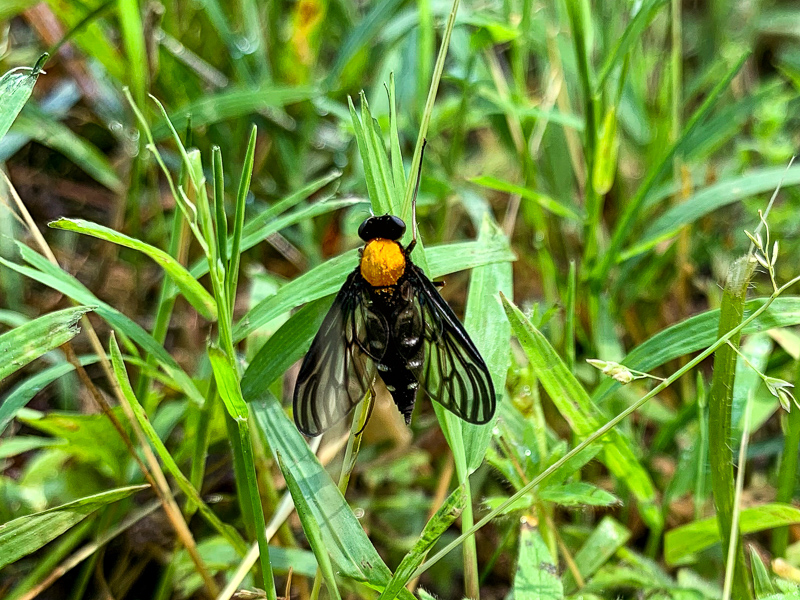Ask a Naturalist: Golden-backed Snipe Fly
For immediate release ‐ June 30, 2021
Ask a Naturalist
Contact: Micah Beasley, 919.707.9970. Images available upon request
 Golden-backed Snipe Fly. Photo: B. Waller.
Golden-backed Snipe Fly. Photo: B. Waller.
All That Glitters Might Be Gold
By Colin Brammer, Coordinator of the Natural World Investigate Lab
Recently, one of our sharp-eyed visitors at Prairie Ridge Ecostation noticed a fly “adorned with gold filagree-like structure on its back.” What they saw was a Golden-backed Snipe Fly, Chrysopilus thoracicus. The name is derived from the Greek Chryso, meaning golden, and Latin pilus, meaning hairs. The species epithet is Greek thoracicus, referring to the thorax.
One would think it would be easy to see such a distinct, shiny insect sitting on leaves of shrubs or grasses, but many times they are overlooked. Adults normally stand head down when at rest on leaves or grasses. That’s one interesting thing about the Ask a Naturalist photo: the fly is head up!
Snipe flies, also known as Rhagionids (Family Rhagionidae) commonly occur in our area. They received the common name of “snipe fly” due to the distinct mouthparts that resemble the beak of the avian snipe. There are approximately 32 species of Chrysopilus in North America.
Adults have large eyes, tapering abdomens and long, thin legs. They can be found in wooded areas with moist soils. Larvae occur in many places such as under the bark of trees, moist soils, rotting logs and in some cases, beetle burrows. Adults are thought to prey on soft bodied insects, but at times have been found sipping nectar from flowers. Larvae are also predaceous, with Chrysopilus larvae predating on oligochaetes (earthworms and relatives) and soft-bodied insects. Little else is known about the life habits of these flies.
So the next time someone sends you on a “snipe hunt” in the woods, you may just get the better of them and find one!
Previous Ask a Naturalist: Butterfliles & Moths | Older Ask a Naturalist posts
For more information about our upcoming activities, conservation news and ground-breaking research, follow @NaturalSciences on Instagram, Twitter and Facebook. Join the conversation with #visitNCMNS.

